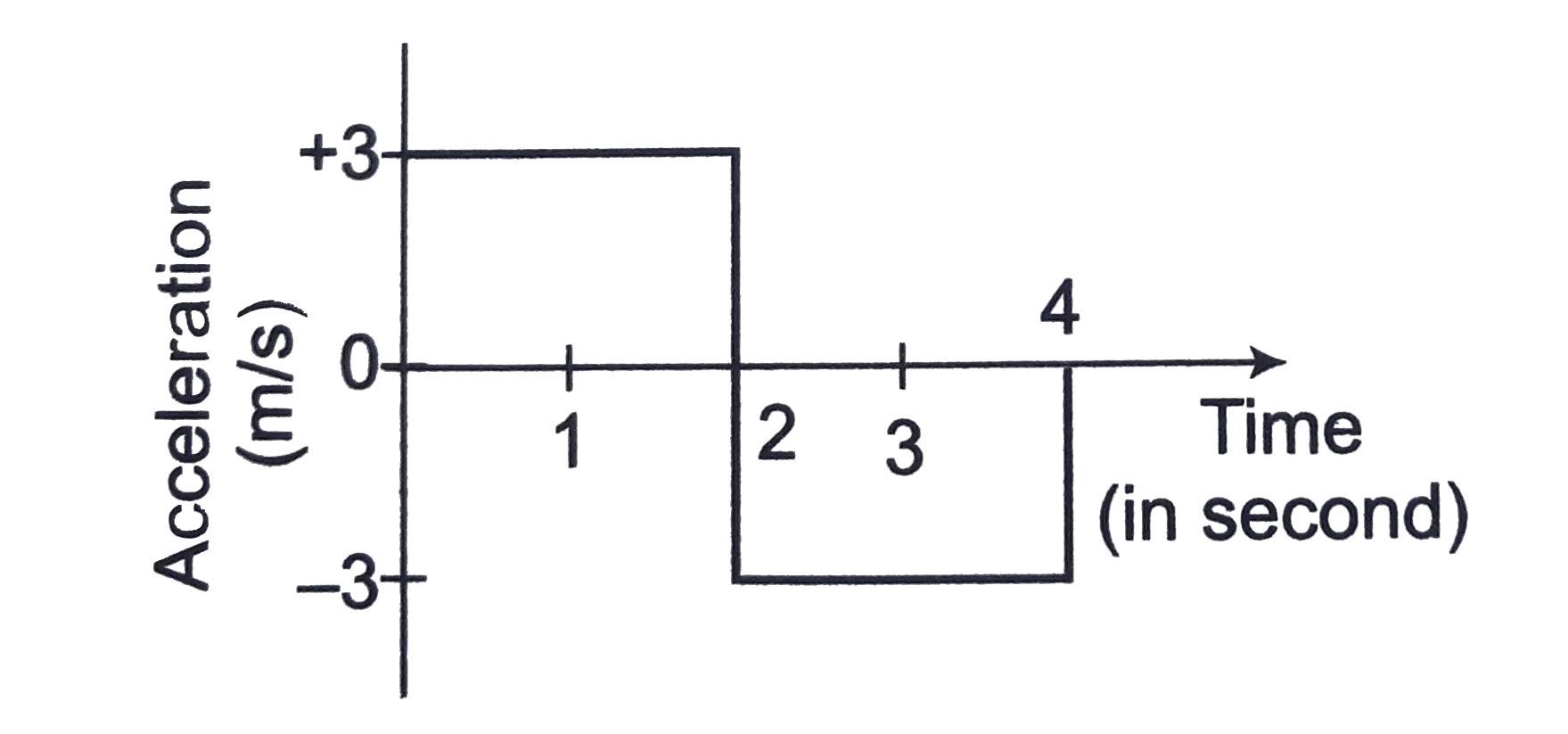A particle, initially at rest, starts moving in a straight line with an acceleration a=6t+4m/s2. The distance covered by it in 3 s is
15 m
30 m
45 m
60 m
The correct Answer is:C
To solve the problem of finding the distance covered by a particle moving with an acceleration given by a=6t+4m/s2 over a time interval of 3 seconds, we can follow these steps:
Step 1: Understand the relationship between acceleration, velocity, and displacement.
Acceleration is the rate of change of velocity, and velocity is the rate of change of displacement. Therefore, we can express these relationships mathematically:
- a=dvdt
- v=dxdt
Step 2: Integrate the acceleration to find the velocity.
Given the acceleration a=6t+4, we can write:
dvdt=6t+4
Now, we integrate both sides with respect to time t:
∫dv=∫(6t+4)dt
This gives us:
v=3t2+4t+C
Since the particle is initially at rest (at t=0, v=0), we can find the constant C:
0=3(0)2+4(0)+C⟹C=0
Thus, the velocity function is:
v=3t2+4t
Step 3: Integrate the velocity to find the displacement.
Next, we need to find the displacement x by integrating the velocity:
dxdt=3t2+4t
Integrating both sides gives:
∫dx=∫(3t2+4t)dt
This results in:
x=t3+2t2+C
Again, since the particle starts from rest at t=0 (and thus x=0), we find:
0=(0)3+2(0)2+C⟹C=0
So, the displacement function is:
x=t3+2t2
Step 4: Calculate the distance covered in 3 seconds.
Now, we can find the distance covered in 3 seconds by substituting t=3 into the displacement equation:
x(3)=(3)3+2(3)2
Calculating this gives:
x(3)=27+2×9=27+18=45meters
Final Answer:
The distance covered by the particle in 3 seconds is 45 meters.
---
Acceleration is the rate of change of velocity, and velocity is the rate of change of displacement. Therefore, we can express these relationships mathematically:
- a=dvdt
- v=dxdt
Given the acceleration a=6t+4, we can write:
dvdt=6t+4
Now, we integrate both sides with respect to time t:
∫dv=∫(6t+4)dt
This gives us:
v=3t2+4t+C
Since the particle is initially at rest (at t=0, v=0), we can find the constant C:
0=3(0)2+4(0)+C⟹C=0
Thus, the velocity function is:
v=3t2+4t
Next, we need to find the displacement x by integrating the velocity:
dxdt=3t2+4t
Integrating both sides gives:
∫dx=∫(3t2+4t)dt
This results in:
x=t3+2t2+C
Again, since the particle starts from rest at t=0 (and thus x=0), we find:
0=(0)3+2(0)2+C⟹C=0
So, the displacement function is:
x=t3+2t2
Now, we can find the distance covered in 3 seconds by substituting t=3 into the displacement equation:
x(3)=(3)3+2(3)2
Calculating this gives:
x(3)=27+2×9=27+18=45meters
The distance covered by the particle in 3 seconds is 45 meters.
Topper's Solved these Questions
Similar Questions
A particle starts moving in a straight from rest with constant acceleration until it reaches velocity v. The distance travelled by it until this point is . Then, it covers a further distance x at constant velocity. Finally, it slows down to rest at a constant rate such that it covers distance 2x. The total time for which the particle moved is T .Then ,Tvx=
View SolutionA particle starts moving in a straight line from rest with an acceleration (inm/s2) given by : a=12√x, where x is the distance travelled by the particle (in meters ) The velocity of the particle at the instant when its acceleration is 48m/s2 is .......m/s
View Solution
Knowledge Check
- Question 1 - Select One
A particle at rest starts moving in a horizontal straight line with a uniform acceleration. The ratio of the distances covered during the fourth and third seconds is
A4/3B26/9C7/5D2 - Question 2 - Select One
The initial velocity of a body moving along a straight lines is 7m/s. It has a uniform acceleration of 4m/s2 the distance covered by the body in the 5th second of its motion is-
A25mB35mC50mD85m - Question 3 - Select One
A body moving with uniform acceleration 8m/s2 starts from rest. The distance covered by it in fifth second will be
A8 mB64 mC4 mD36 m
A body starting from test along straight line is traveling with an acceleration of 6ms−1, then the distance traveled by it in the 3rd seconds is ___________m
View SolutionA particle starts from rest at t=0 and moves in a straight line with an acceleration as shown below. The velocity of the particle at t=3 s is
 View Solution
View SolutionA body start from rest and moves in a straight line with uniform acceleration F , the distances covered by in it second , fourth and eights seconds are
View SolutionA particle starts from rest at t=0 and moves in a straight line with an acceleration as shown below. The velocity of the particle at t=3 s is
 View Solution
View SolutionA particle is moving on a straight line with constant retardation of 1m/s2. Its initial velocity is 10m/s.
View Solution

